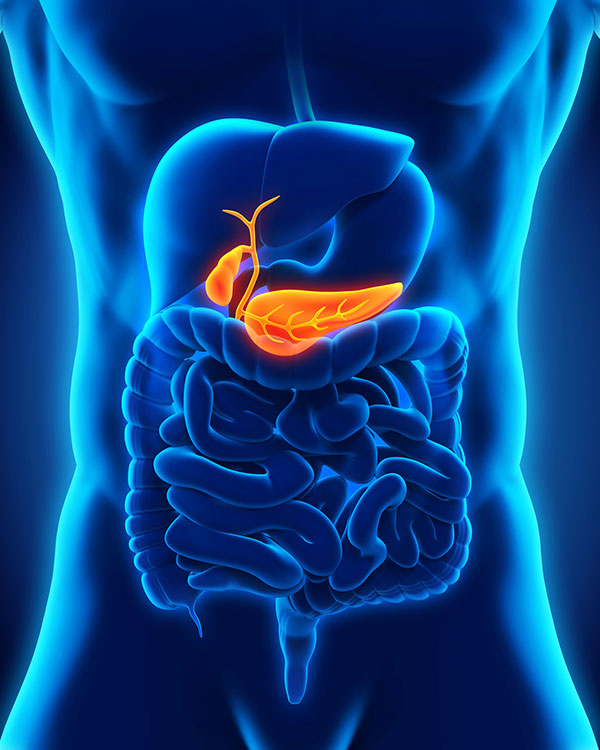Biliary and pancreatic surgery has always been a challenge for the surgeon because these organs are difficult to access surgically, they are adjacent to important anatomical structures and their diseases have a complex pathophysiology.
Biliary and pancreatic surgery has always been a challenge for the surgeon because these organs are difficult to access surgically, they are adjacent to important anatomical structures and their diseases have a complex pathophysiology.
In the past, this surgery was associated with high morbidity and mortality. Today things have changed. Understanding the pathophysiology of diseases with the help of molecular biology, the development of imaging methods (MRI-MRCP, Spiral CT, endoscopic ultrasound) and surgical techniques and better training-specialization of surgeons allow safe and successful treatment of diseases of the bile ducts and pancreas.
The biliary cyst is pear-shaped and is attached to the lower surface of the right lobe of the liver. It ends in the cystic duct which flows into the common hepatic duct and together they form the bile duct. The hepatic pores start from the liver as right and left and drain the corresponding lobes of the liver. The two hepatic pores join together to form the common hepatic duct. The bile duct passes behind the beginning of the duodenum and through the posterior surface of the pancreas flows into the 2nd degree of the duodenum in the vater's phyma.
Bile is an aqueous solution of various substances: bile acids, bile pigments, cholesterol, fatty acids, proteins, inorganic salts and products of liver metabolism.
Bile performs and participates in a number of important functions:
- Helps in the hydrolysis and absorption of lipids
- Helps absorb calcium, iron, cholesterol and fat-soluble vitamins
- Activates the secretion of digestive enzymes
- Neutralizes gastric juices
- Serves as a means of eliminating elements that are metabolized in the liver
The pancreas, the second largest gland in humans, is located in the back of the abdomen retroperitoneally. It has a conical shape and extends obliquely, from right and bottom to left and up, intervening between the duodenum and the spleen. Pancreatic fluid pours into the pancreatic pores (main and ancillary) which flow into the vater's phyma along with the bile duct.
The pancreas is a mixed gland with endocrine and exocrine portion. The endocrine portion secretes hormones such as insulin, glucagon, somatostatin and pancreatic polypeptide. The exocrine portion produces the pancreatic fluid which is a mixture of inorganic (electrolytes, trace elements) and organic (enzymes, preenzymes) elements involved in the digestion of food.
Biliary and pancreatic surgery covers a wide variety of surgeries. Diseases can be divided into those caused by tumors (benign or malignant), those caused by inflammation (acute or chronic) and chololithiasis.
The most common operations performed are cholecystectomy (laparoscopic or open) for choledocholithiasis, choledochotomy with examination of the bile duct and placement of a kehr tube in choledocholitrhiasis, choledochojejunal and choledochoduodendal anastomosis in cases of obstruction of the final bile duct, pancreatoduodenectomy (Whipple or Longmire-Traverso) in cancers of the head of the pancreas and peripheral pancreatectomy in cancers of the body or tail of the pancreas.
 English
English  Ελληνικά
Ελληνικά 

